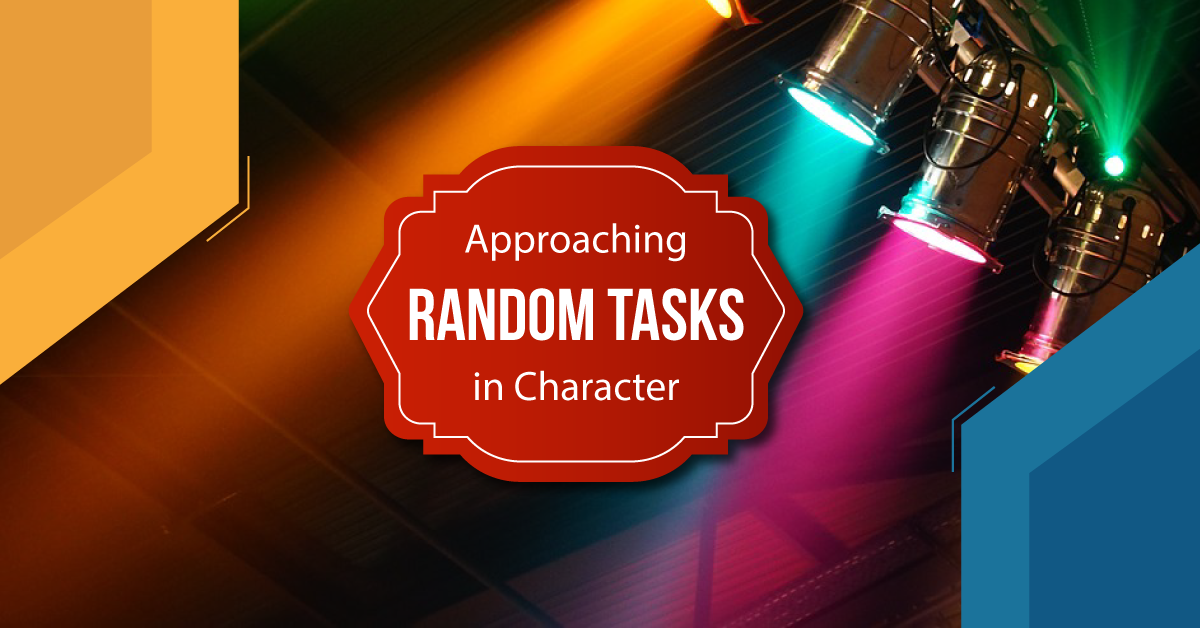Exercise: Approaching Random Tasks in Character
A common question that is asked of student actors when they’re analyzing their character is: “What was your character doing before this scene?” Or “What is your character going to do after this scene?” It’s always interesting to think of what the characters are doing while they aren’t onstage. The following exercise gives students a chance to explore this. The exercise challenges students to delve deeper into their roles by having them try various “everyday” tasks while in character. As well, it offers students a chance to explore different ways of moving and thinking while in character. How might Romeo cook breakfast? How would Eliza Doolittle wash her clothes? What if King Arthur decided to do yoga?
You will need a minimum of two classes to complete this exercise – one class for students to prepare their scenes in advance, and one class to present the scenes using the task prompts included with this exercise.
Steps:
1. Students will select partners.
2. Students receive a two-person scene. Depending on your available time, students can either prepare the scenes in class, at home as homework, or work on-book. Scenes should have basic blocking and be memorized. (Please note that if time makes it necessary, students can have their scripts, but this exercise is easiest when done off-book – students will not need to fumble with their lines/scripts while trying to think of movements and use their bodies.)
3. Once students have their scenes prepared, use the task prompt sheet at the end of this blog to assign students a random task. The sheet can be used as a checklist to assign prompts, or you can cut the prompts into small slips and have students choose their tasks out of a hat or bag. There are 40 prompts on our giveaway, but feel free to add your own prompts!
4. Students will then apply their task to the scene, rather than using their original blocking. For example, a student playing Hamlet may need to iron a shirt, while Ophelia changes a baby’s diaper. You may wish to allow students some class time to prepare their scenes using the prompts, OR (for a challenge) treat the scenes as an improvised exercise and have the students figure out their movements on the fly.
5. Students will present their scenes for the rest of the class. After all the scenes are presented, students will complete and submit a Reflection.
Variations:
- One character completes a task while the other character stays with their original blocking.
- Both characters complete the same task together.
- Each character completes a different task at the same time.
- Use this exercise as an improv exercise, where students make up their own mini-scenes, in character, while completing their task(s).
- This exercise can also be adapted to use in rehearsal for a show, to help student actors further develop their characters. Have students draw tasks from the hat or bag and present the scenes in the show using the prompts. How is the exercise different with more/fewer actors?



